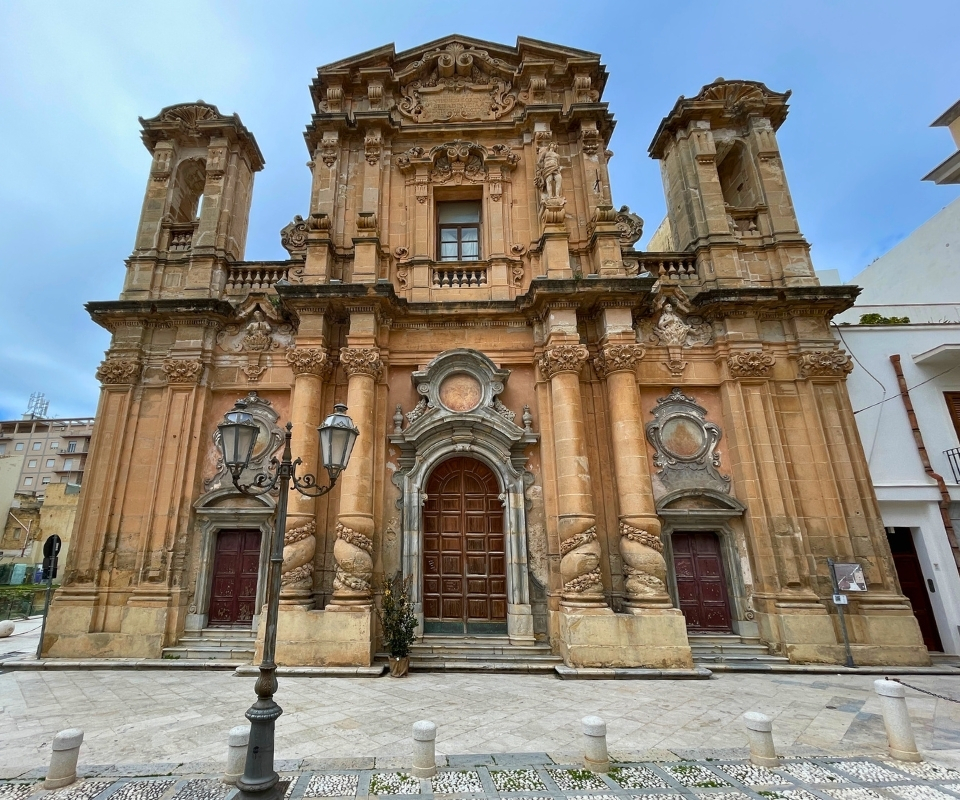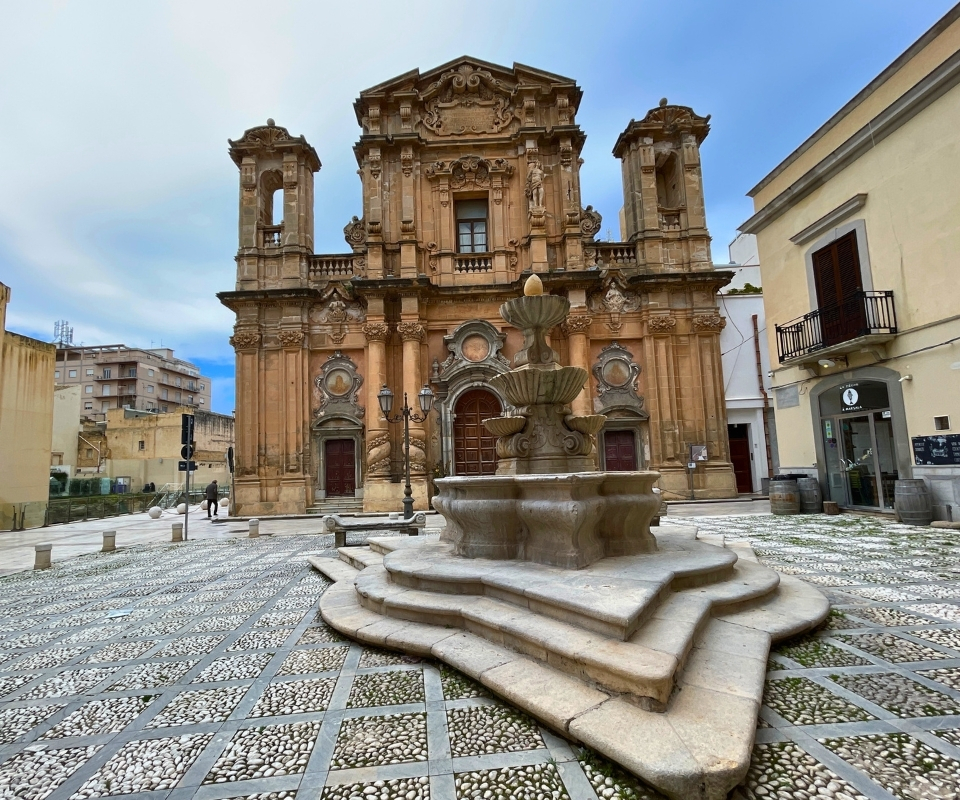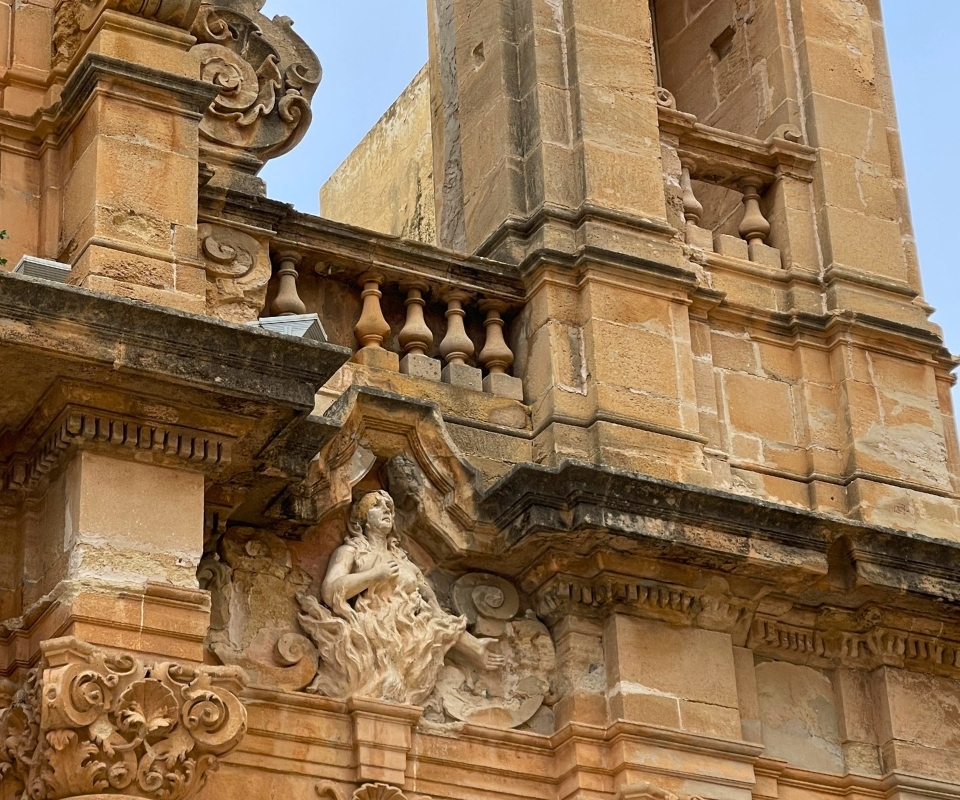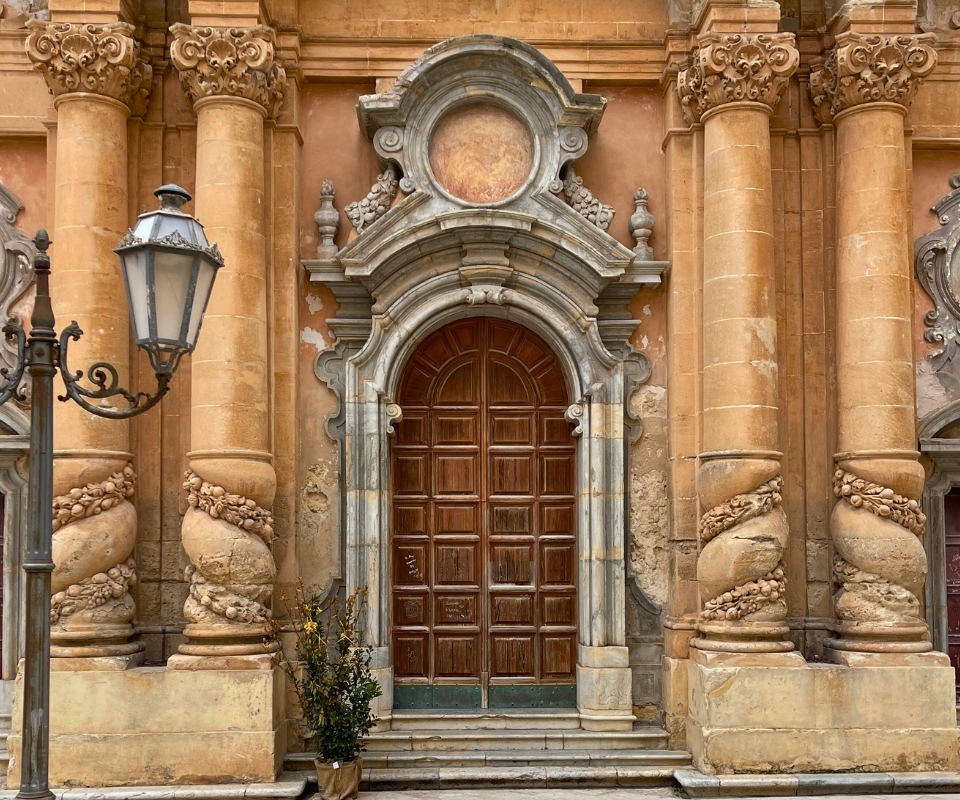A short distance from the Cathedral, overlooking a secluded square, stands the Church of the Purgatorio, considered one of the finest examples of sacred Baroque architecture in Marsala. The current building dates back to between the seventeenth and eighteenth centuries and has unique origins: it was erected on the site of a previous small church dedicated to Saints Fabian and Sebastian, after a devastating plague prompted the local Congregation of the Souls of Purgatory to enlarge and rededicate the place of worship. Already since sixteen-oh-one, a confraternity devoted to the souls in Purgatory had settled here, giving the church its present name. Reconstruction works, likely begun around sixteen sixty-nine, culminated in the official consecration of the temple in seventeen eleven, marking the completion of the project. Thus, Marsala’s Church of the Purgatorio perfectly embodies the union between popular devotion and artistic ambition typical of late Sicilian Baroque: it was designed to impress and simultaneously educate the faithful through its lavish decorations, reflecting the religious fervor of its time. Over the subsequent centuries, the building underwent restorations, yet it has reached the present day preserving its spectacular Baroque appearance. Some describe it as Marsala’s most beautiful church—and rightly so: the opulence of its façade and frescoed interiors make it a true architectural gem.
The façade immediately captures attention with its abundant ornamentation and rich Baroque forms. Divided into two levels adorned by four imposing Corinthian columns, its tall central section is flanked by two lateral bell towers—a design reminiscent of Borromini’s Roman churches. Statues and floral motifs carved in stone enhance the façade, while scrolls and cornices frame its openings and pediment, giving dynamic movement to the structure. At the two upper corners, slender domes atop the bell towers frame the sky and complete the harmonious perspective. Facing the church is Piazza del Purgatorio, at the center of which a monumental eighteenth-century fountain adds charm to the urban scenery.
The interior, shaped as a Latin cross with three naves and a transept, is enriched by vividly colored eighteenth-century frescoes and finely crafted stuccoes. Natural light filtering through stained glass windows enhances details on the painted ceilings and the elegant, high dome rising above the transept intersection. Numerous paintings and sculptures embellish the side chapels, testifying to the devotional fervor of the confraternities that celebrated Masses here in memory of souls. Particularly revered is the statue of the Madonna Addolorata, traditionally carried in procession by members of the confraternity during Holy Week rites. Today, the Church of Purgatorio has a dual role: on one hand, it remains a historical and artistic heritage site open to visitors; on the other hand—having been deconsecrated—it serves as a civic auditorium named after Saint Cecilia, hosting concerts, exhibitions, and cultural events. Entering this church means experiencing a remarkable representation of Sicilian Baroque in all its theatricality—a place where art and faith have intertwined, creating a space that continues to fascinate and captivate its visitors.
360° Virtual Tour
How to get there







